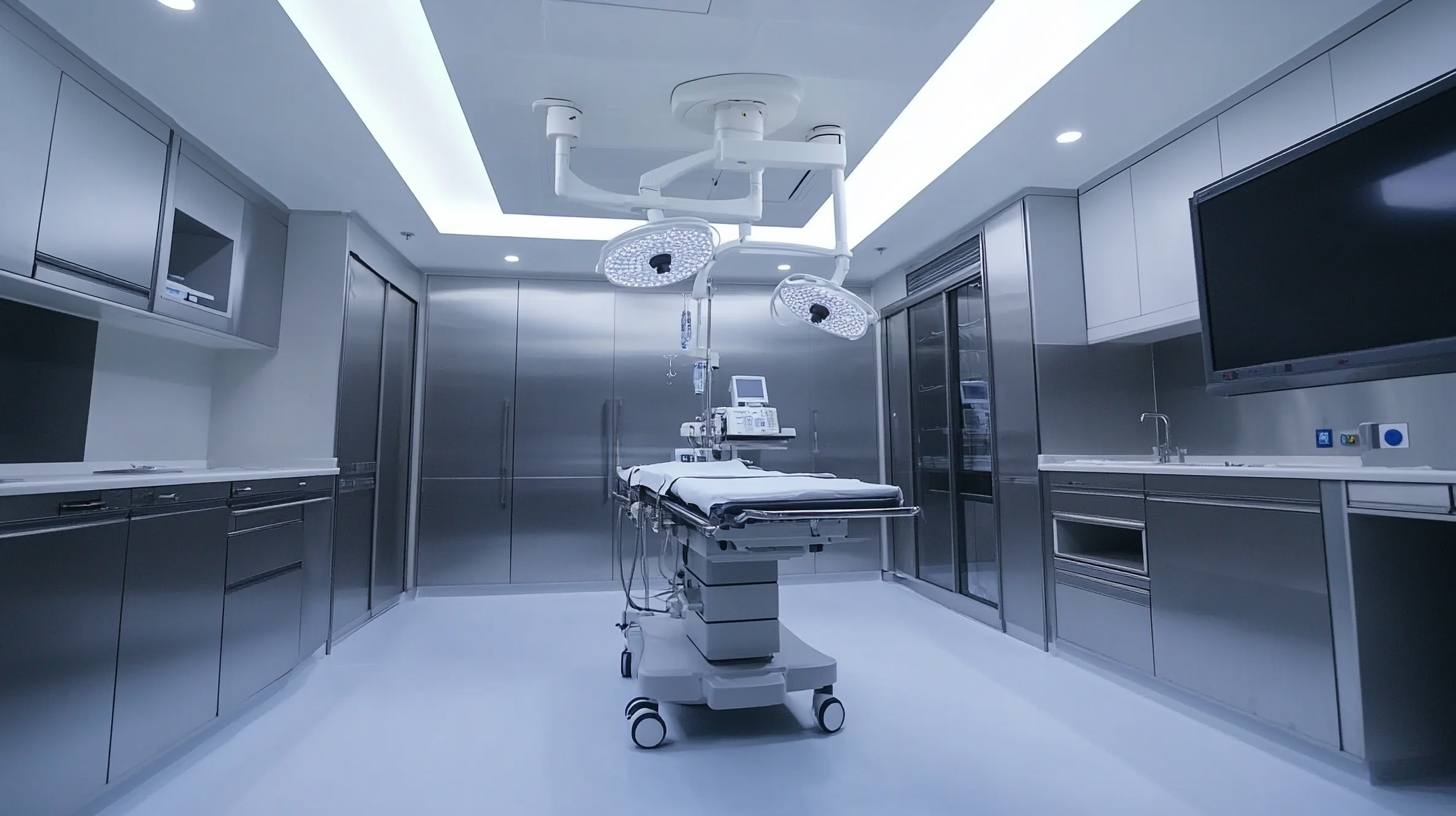The Ultimate Resource for Global Buyers in Surgical Supplies Market Trends and Insights
In today's rapidly evolving healthcare landscape, understanding market trends and insights is crucial for global buyers in the surgical supplies sector. As the demand for advanced medical technology and innovative solutions continues to rise, navigating the complexities of the surgical supplies market becomes increasingly vital. This blog serves as the ultimate resource for those seeking to stay ahead of the curve, providing comprehensive analysis and expert insights to facilitate informed purchasing decisions.
With an emphasis on the latest trends and market dynamics, we aim to empower buyers by shedding light on key factors that influence the surgical supplies industry. From emerging technologies to regulatory changes, our exploration will equip you with the knowledge needed to make strategic choices that enhance patient care and operational efficiency. Join us as we delve into the essential insights that define the current landscape of surgical supplies, ensuring your business can thrive in this competitive environment.

Current Trends in the Surgical Supplies Market: A Comprehensive Overview
The surgical supplies market is witnessing rapid evolution driven by several key trends and advancements. As of 2024, the global surgical equipment market size is estimated at USD 18.37 billion, with projections indicating a robust compound annual growth rate (CAGR) of 9.54% from 2025 to 2030. This growth reflects the increasing demand for top-tier surgical devices and instruments, which are critical in improving patient outcomes and operational efficiencies within healthcare facilities. Innovations in technology play a vital role in shaping the surgical supplies landscape. The next generation of surgical robotics, for instance, is set to revolutionize surgical practices worldwide. Emerging frameworks for the evaluation of these robotic systems are essential to ensure they meet the clinical demands and enhance surgical precision. Moreover, the integration of artificial intelligence in clinical practice is becoming increasingly prevalent, bolstering the capability of healthcare professionals to deliver superior care while optimizing operational workflows. In addition to technological advancements, regulatory developments are also influencing the surgical supplies market. Ongoing evaluations by regulatory bodies ensure that new products comply with safety and efficacy standards, thereby increasing market confidence. With the continuous rise in minimally invasive procedures and the demand for high-quality surgical supplies, the market's future looks promising, indicating a critical phase of growth and innovation ahead.

Key Factors Influencing Global Demand for Surgical Supplies
The global surgical supplies market is undergoing significant transformation, influenced by various factors that drive demand across different segments. One key aspect shaping market trends is the rise in minimally invasive surgical procedures, which has resulted in a burgeoning demand for advanced surgical instruments and technologies. The adoption of minimally invasive techniques offers numerous benefits, including reduced recovery times and lower risk of complications, compelling healthcare providers to invest in specialized equipment.
In particular, the market for surgical microscopes is experiencing rapid growth, projected to reach $1.5 billion in 2024. The increasing number of surgical procedures, coupled with technological advancements in imaging and optics, is expected to fuel a compound annual growth rate (CAGR) of 11.8% from 2025 to 2034. This growth is not only driven by traditional applications in fields such as orthopedics and ophthalmology but also by innovations in robotic-assisted surgeries, which are gaining traction in the surgical landscape.
As the surgical supplies market evolves, it's crucial for global buyers to stay informed about the latest trends and insights. Understanding the competitive dynamics across key product categories—including microsurgical instruments, operating microscopes, and minimally invasive surgical equipment—will empower stakeholders to make strategic purchasing decisions that align with current demands. The integration of new technologies and the expansion of product offerings are expected to further enhance the landscape of surgical supplies, creating new opportunities for innovation and growth in this vital sector.

Emerging Technologies Shaping the Future of Surgical Supplies
Emerging technologies are revolutionizing the surgical supplies market, significantly influencing the way healthcare providers operate. Innovations such as 3D printing, robotics, and advanced materials are not only improving the quality of surgical supplies but also enhancing their accessibility and customization. For instance, 3D printing allows for the production of patient-specific implants and instruments, minimizing the risk of complications and improving surgical outcomes. This technology enables hospitals to produce essential supplies on demand, reducing dependency on external suppliers and shortening delivery times.
In addition to 3D printing, the integration of robotics in surgical procedures is transforming traditional methods. Surgical robots enhance precision and control, allowing surgeons to perform minimally invasive procedures with greater accuracy. This shift not only improves patient recovery times but also optimizes the use of surgical supplies by minimizing waste and streamlining processes. Furthermore, the use of artificial intelligence (AI) in inventory management predicts supply needs and automates reordering processes, ensuring that essential supplies are readily available when needed.
Overall, the adoption of these emerging technologies in the surgical supplies market is setting new standards for efficiency and effectiveness in healthcare delivery. By embracing innovation, healthcare providers can ensure better resource management and patient care, ultimately shaping the future of the surgical supplies landscape.

Navigating Regulatory Challenges in the Surgical Supplies Industry
Navigating the surgical supplies industry can be a complex endeavor, particularly given the myriad of regulatory challenges that stakeholders face globally. Understanding these regulations is crucial for buyers who aim to maintain compliance while also ensuring the quality and safety of the products they procure. Each region has its specific requirements, from FDA regulations in the United States to the Medical Device Directive in Europe, which can lead to confusion for global buyers trying to align their purchasing strategies with local laws.
One of the pressing issues in regulatory navigation is the need for thorough documentation and certification processes. Buyers must ensure that suppliers provide adequate evidence of compliance, such as ISO certifications and clinical evaluations, to avoid costly setbacks. Furthermore, familiarizing oneself with post-market surveillance requirements is essential, as ongoing compliance is as critical as initial approval. This can involve monitoring the performance of surgical supplies in real-time and promptly reporting any adverse effects, which requires a proactive approach from both buyers and suppliers.
In addition to compliance, the evolving nature of regulations signifies that buyers must stay informed about changing rules and standards. This entails actively engaging with industry associations and regulatory bodies to gain insights and updates that could impact procurement strategies. By doing so, global buyers can not only adhere to regulatory requirements but also foster relationships with suppliers who prioritize compliance, ultimately leading to more successful partnerships in the surgical supplies market.
Strategies for Sourcing and Buying Surgical Supplies Effectively
In the ever-evolving landscape of the surgical supplies market, sourcing and purchasing effectively requires a nuanced understanding of current trends and strategic approaches. One of the most critical strategies for global buyers is to establish robust relationships with suppliers. This not only helps in negotiating better prices but also ensures a reliable supply chain during times of increased demand. Engaging with suppliers through regular communication can provide valuable insights into product availability and potential innovations that may enhance operational efficiency.
Another effective sourcing strategy is to leverage technology for market research. Utilizing data analytics tools can provide insights into buying patterns, pricing trends, and competitor analysis. Buyers can identify opportunities for bulk purchasing or seasonal discounts, which can contribute to significant cost savings over time. Additionally, being attentive to the regulatory landscape in various regions enables buyers to make informed decisions, ensuring compliance while also maintaining quality standards.
Moreover, considering the diversification of supply sources can mitigate risks associated with single-supplier dependencies. Exploring alternative markets and suppliers allows buyers to adapt quickly to market fluctuations and shortages. By evaluating multiple suppliers and their product offerings, buyers can not only optimize costs but also enhance the quality and reliability of the surgical supplies they procure. In this dynamic market, strategic sourcing and purchasing play a vital role in ensuring that healthcare providers have the necessary tools to deliver quality patient care.

